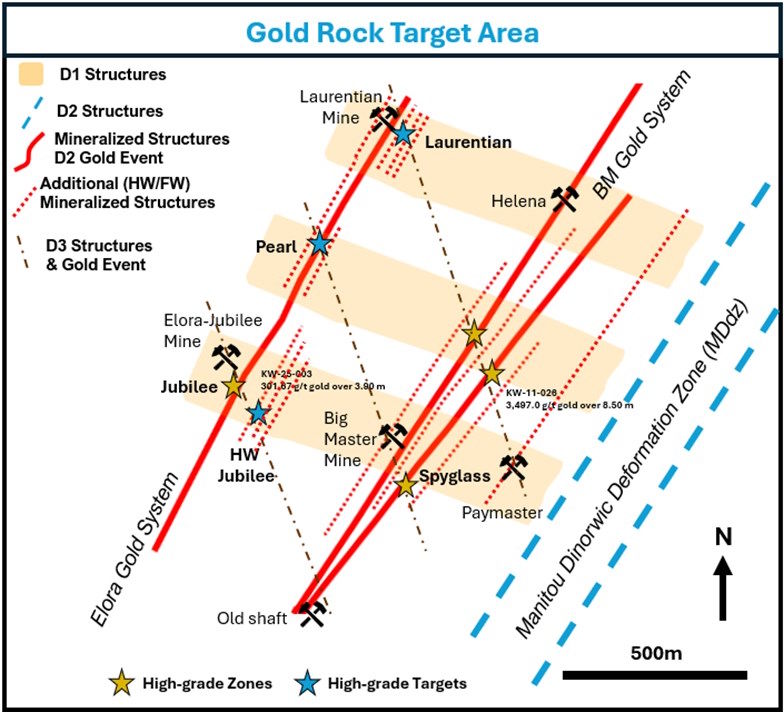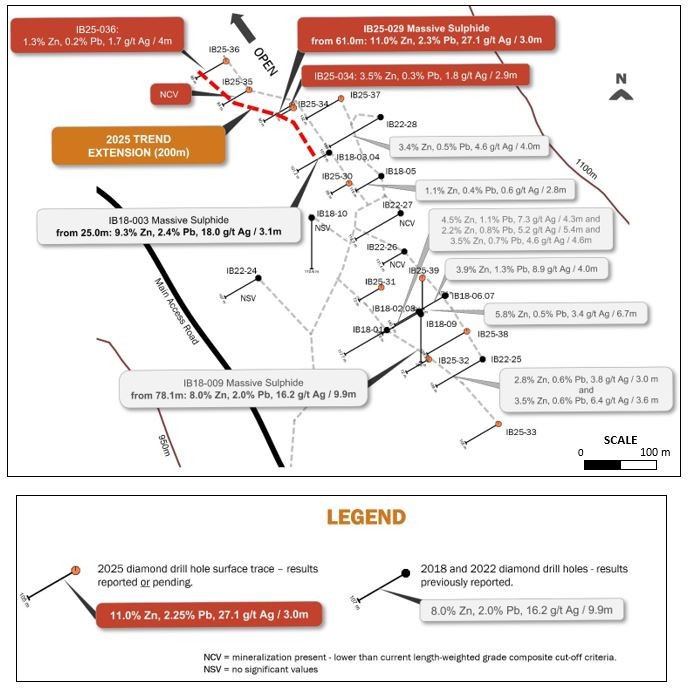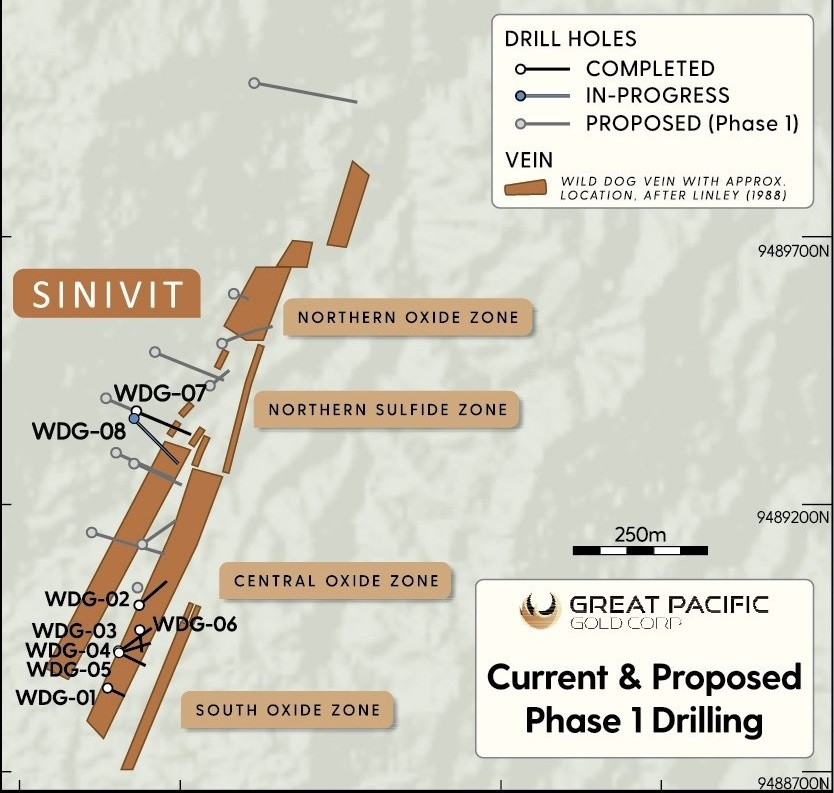Vancouver, British Columbia / TheNewswire / July 4, 2017 - Arizona Silver Exploration Inc. (the "Company") (TSX-V: AZS) is pleased to announce the second batch of drill results from the first phase of drilling in 2017 on the Ramsey Silver Project located in La Paz County, Arizona.
Drill Results
Drill hole R1706 intersected 145 feet (44.2 metres with approximate true width of 35 metres) containing 62.5 g/tonne (gpt) Ag between 260-405 feet (79.3-123.5 metres) down-hole depth. R1706 was drilled at -75 degrees bearing 60 degrees azimuth. This interval is contained within a wider zone of silver mineralization between 210-500 feet (64-152.4 metres: 88.4 metres with approximate true width of 70 metres) averaging 42.6 g/tonne (gpt) Ag. The majority of the intercept is within silicified rhyolite that is hanging-wall to the fault contact that hosts the high-grade vein that was the focus of historical mining on the property. A minority of the intercept is below that fault contact. A discrete vein was not recognized in the drill cuttings. Rather the zone of silver mineralization appears to be a wide zone of disseminated and stockwork mineralization throughout the intervals reported. The higher grade interval averages 0.18% Pb and 0.34% Zn, while the broader lower silver grade interval averages 0.15% Pb and 0.26% Zn. Both intervals contain appreciable barite with numerous sample intervals containing greater than 1% Ba.
Drill hole R1707 was drilled from the same pad as R1706, but at -60 degrees along a 60 degrees azimuth. R1707 intersected 175 feet (53.4 metres with approximate true width of 42 metres) from 280-455 feet (85.4-138.7 metres) containing 37.3 gpt Ag within a wider zone of silver mineralization from 215-465 feet (65.5-141.8 metres) containing 31.1 gpt Ag. Lead and zinc contents were 0.13% Pb and 0.22% Zn for the higher grade silver interval and 0.11% Pb and 0.21% Zn for the broader lower grade silver interval. The hole contained significant barite as in R1706 with numerous sample intervals containing greater than 1% Ba. The intercept in R1707 is located approximately 30 metres east the intercept in R1706.
The two intercept are at approximately the same elevations, suggesting the mineralized zone is flat-lying and not dipping in the plane of the fault that contained the high grade vein that was mined historically. This opens up the target area east and south of the Ramsey mine workings to a thick, relatively flat-lying mineralized zone that lies at a depth below surface less than or equal to the thickness of the mineralized zone. The alluvial cover at the collar of both holes was approximately 15 metres thick, which is sufficient to mask the mineral system but not too deep to explore with relatively shallow drill holes.
Further to the east of the intercepts in R1706 and R1707 we have mapped extensive and strong silica + iron alteration of the rhyolite across an area of ~700 metres x 250 metres that has never been drilled to the depths referenced in the intercepts above. This area represents a highly prospective target area for the continuation of silver mineralization encountered in drill holes R1706 and R1707.
The Ramsey silver mineral system appears to be very large and is wide-open to the east and south, where no previous drilling or mine development has occurred.
We are encouraged with the results of the drilling east of the old Ramsey Mine workings and have intersected what we think is the periphery of a much larger silver-bearing hydrothermal system centred on the strong alteration mapped to the east and south. We will post a cross section of the drill results to the web site after we have finalized one. Please take a moment to view our web site with images of the geology and core at www.arizonasilverexploration.com.
Western Deep IP Anomaly - A Large Target
We have engaged a geophysical consultant to model the western deep IP anomaly to ascertain what size sulphide-bearing body, buried at what depth, is required to generate the anomaly detected on all three IP lines. The initial results suggest it takes a very large body in excess of 500 metres cubed, buried at a depth of 100-200 metres, to generate the anomaly. We will report on the details and results of that effort when it is completed.
QA/QC and Analytical Procedures
All drill cuttings were transported under strict chain of custody by ALS Minerals personnel to the ALS Minerals laboratory in Tucson Arizona, where samples were dried and crushed to 70% passing 2 mm, a 250 gram split is taken and pulverized to 85% passing 75 microns, subject to a four-acid digestion, and then analyzed by ICP/MS for a 48-element package including silver, lead, and zinc. Samples over 100 ppm silver and over 10,000 ppm lead or zinc are re-analyzed using ICP for higher concentration levels. Selected intervals with high silver values are re-submitted for 1-assay ton fire assays for gold.
Greg Hahn, President and COO and a Certified Professional Geologist (#7122), is the Qualified Person under NI43-101 responsible for preparing and reviewing the data contained in this press release.





